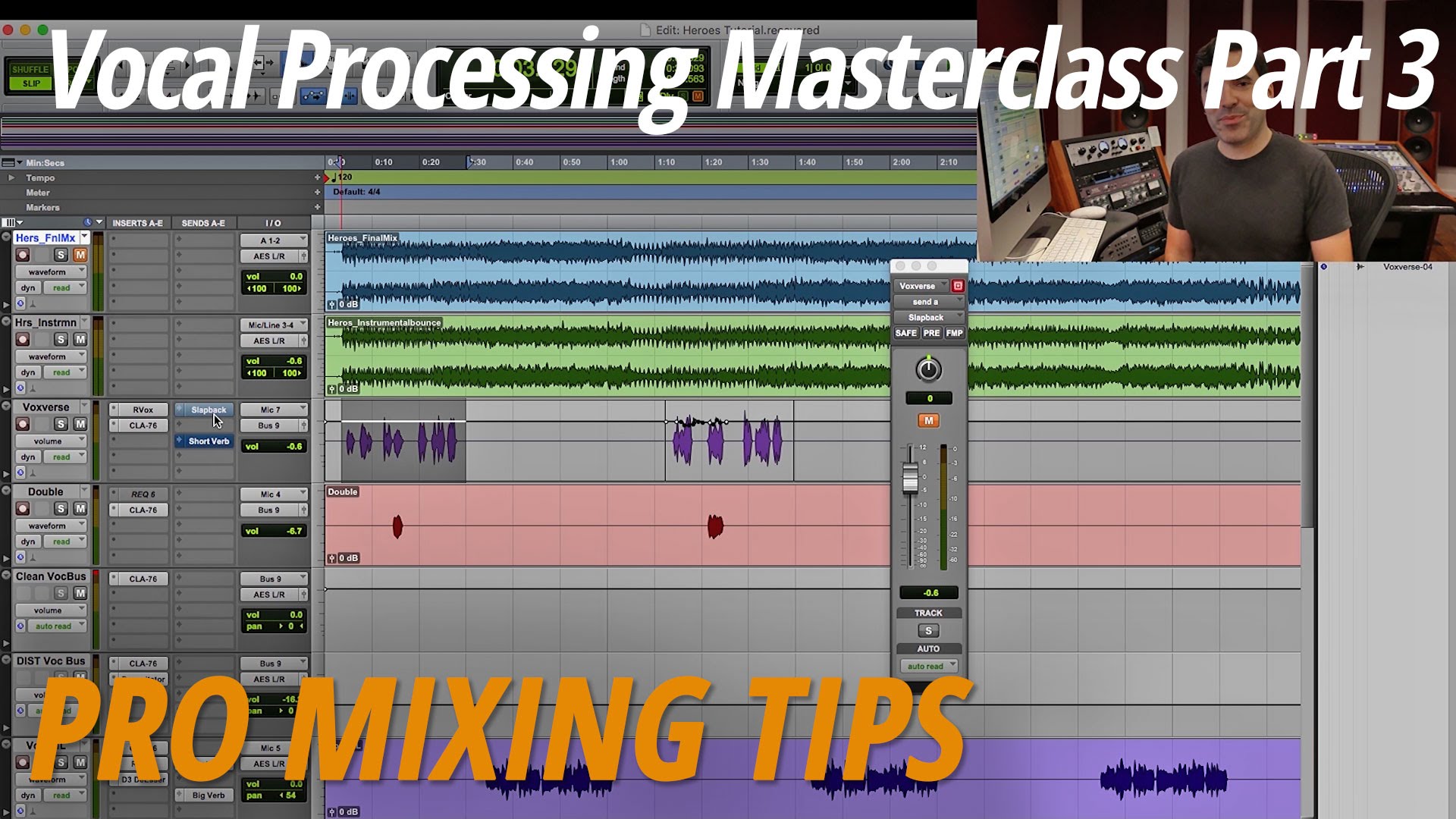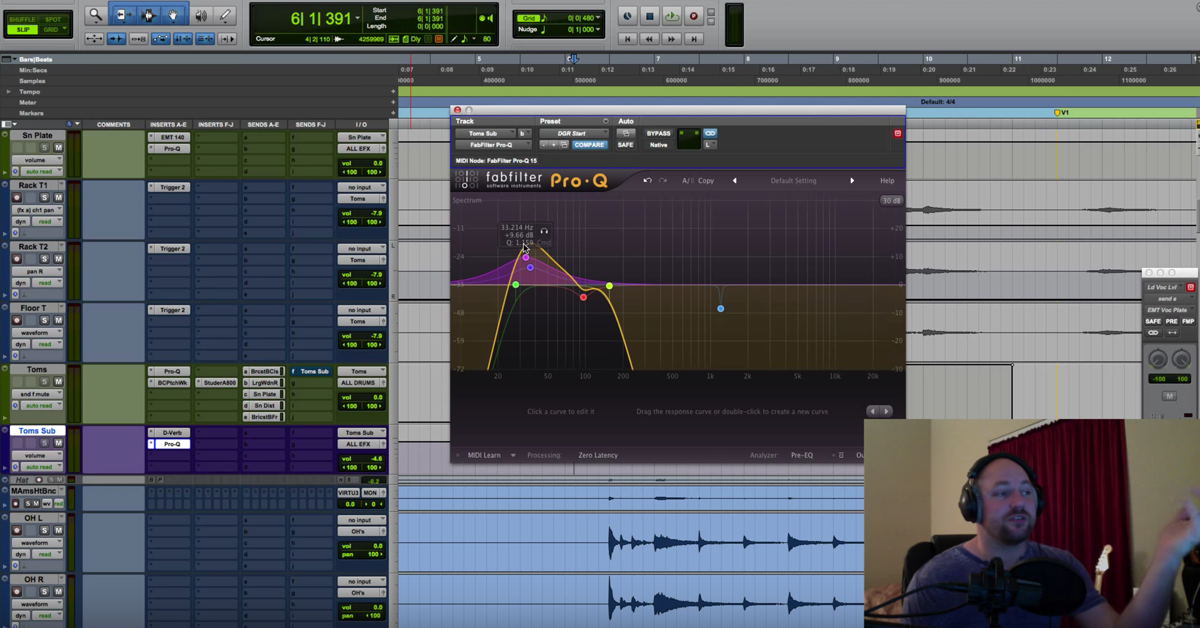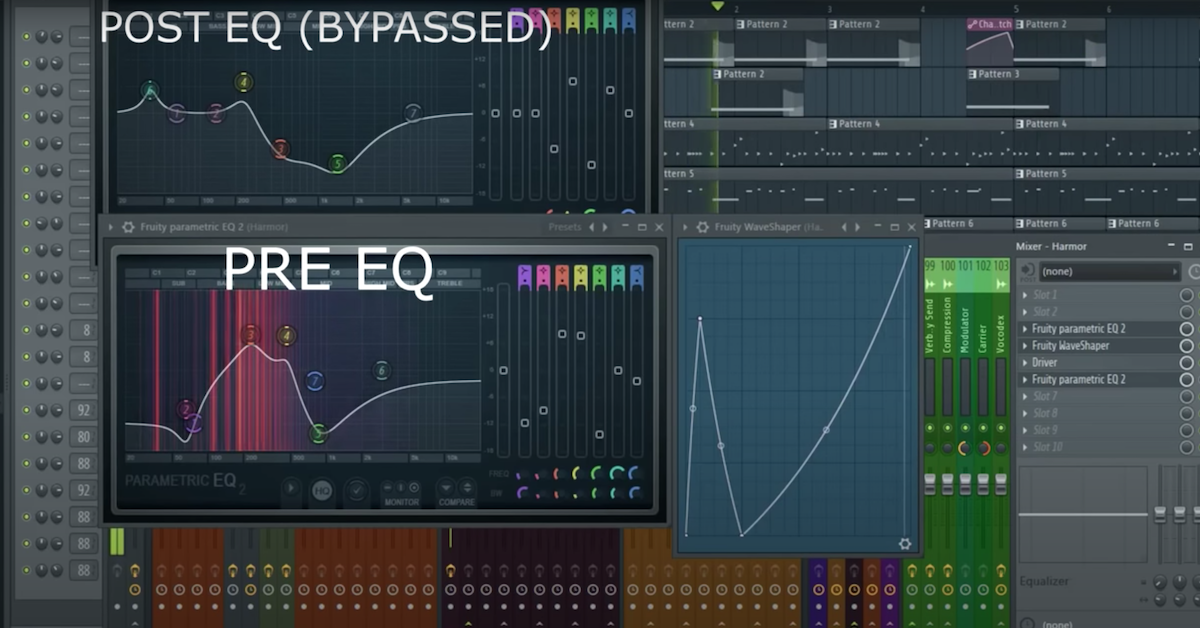58 Quick Mixing, Producing and Sound Design Tips
Article Content
➥ Download a free sample pack from Cristofer Odqvist
Try a tempo synced tremolo on your reverb return.
— Production Tips (@MgntcSound) November 7, 2014
Humanize your shaker and percussion loops by automating a transient designer. Back off the attack in quieter sections and vice versa. — Production Tips (@MgntcSound) October 4, 2015
Present your hook in an almost subliminal way by loading a sample of it into an IR reverb and sending a rhythmic element to the reverb.
— Production Tips (@MgntcSound) May 20, 2014
Stereo Trick for mono tracks. Duplicate the track, hard pan, use a compressor on one track and an expander on the other. #musicproduction — Production Tips (@MgntcSound) September 29, 2015
Strings: double the part a few semi tones up/down and tune it back to the target pitch. You’ll blend different samples = more real sounding.
— Production Tips (@MgntcSound) October 26, 2014
Cut out the reverb for a few seconds to create an almost claustrophobic feeling! Check the verse on “A Sorta Fairytale” by @therealtoriamos — Production Tips (@MgntcSound) June 17, 2015
Any melody line (vocal or instrumental) can be made richer by adding a harmony, sending it to a reverb and muting the dry sound.
— Production Tips (@MgntcSound) October 4, 2014
Make a pad or shaker track with verb 100% wet followed by a gate. A dry snare triggers the gate and gets a very interesting reverb tail! — Production Tips (@MgntcSound) May 5, 2014
On drum reverbs, use a transient designer and turn up the attack. It gets you a tighter reverb and punchier drums without spiky transients.
— Production Tips (@MgntcSound) June 15, 2015
A track needs more presence? Try brighten up the reverb instead of the dry sound. How does it sound different? How does it work in the mix? — Production Tips (@MgntcSound) September 10, 2014
When using several rhythmic loops, try moving them slightly (in samples or ms) to mess with phase. Interesting tonal artifacts often appear.
— Production Tips (@MgntcSound) September 12, 2014
Guitar parts played with a pick on single strings: Transient designers can make the player sound a lot more confident. Turn up the attack! — Production Tips (@MgntcSound) August 17, 2014
Automate tempo and go up a few BPM in the chorus. It adds excitement and life, just like when real musicians play together. Subtlety is key! — Production Tips (@MgntcSound) August 11, 2014
ADVERTISEMENTFor dry sounds that sound a little detached from the other instruments, put a slap delay (80-100 ms), 0 FB, panned to the opposite side. — Production Tips (@MgntcSound) May 26, 2015
Use a filter in the low end to reduce the bass a bit in the verse, turn off the filter in the chorus. The chorus will have a greater impact! — Production Tips (@MgntcSound) August 1, 2014
ABBA used to speed up the pitch of the song (varispeed) and record vocals and then pitch it back to normal. Try this in your DAW. — Production Tips (@MgntcSound) December 7, 2014
Duplicate a track, pitch shift up 1 octave, insert reverb (100% wet) and mix in subtly with the original for a gentle kinda exciter effect!
— Production Tips (@MgntcSound) July 13, 2014
You got two guitars or synths panned hard left and right? Put a subtle tremolo on each, one doing 16th notes, the other doing 8ths. — Production Tips (@MgntcSound) December 18, 2015
Try inserting a distortion/saturation plugin followed by a low pass filter on an aux before your delay to simulate a tape delay driven hard. — Production Tips (@MgntcSound) January 13, 2016
Try a de-esser before your reverb. Not just on vocals. #musicproduction #mixing — Production Tips (@MgntcSound) January 10, 2016
Put a compressor on mid-range heavy sounds like electric guitars and synths, letting the vocals trigger the sidechain, to make room for it. — Production Tips (@MgntcSound) December 29, 2015
Put a gate on a pad or vocal; let a 16th note rhythm trigger the sidechain, let the gate attenuate 6 dB or so. #musicproduction #mixing — Production Tips (@MgntcSound) January 13, 2016
Tape stop reverb: Record the reverb tail to a new track. Automate (or do in real time and print) a pitch shift down an octave or more. — Production Tips (@MgntcSound) January 5, 2016
When using a delay on a send, put a gate after it and let the dry signal trigger the sidechain. Either let it open the gate, or close it. — Production Tips (@MgntcSound) January 3, 2016
Put some street noise or the sound of a train at low volume behind your drum loop to give it depth and subtle variation. — Production Tips (@MgntcSound) December 21, 2015
Classic vocal trick: don’t send the dry vocal track to a reverb, instead send it to a delay and send the delay to a reverb. — Production Tips (@MgntcSound) December 18, 2015
Try an EQ after your delay with a hi shelving cut, followed by a reverb 20-40% wet for some subtle depth and width added. — Production Tips (@MgntcSound) December 15, 2015
Try putting a subtle chorus on an aux before you reverb. — Production Tips (@MgntcSound) November 27, 2015
New Additions (March 2018):
https://twitter.com/MgntcSound/status/973213643495092225
https://twitter.com/MgntcSound/status/970693119405707265
https://twitter.com/MgntcSound/status/971467587933614080
https://twitter.com/MgntcSound/status/970899126836703232
https://twitter.com/MgntcSound/status/968503823374352384
https://twitter.com/MgntcSound/status/970012393228193792
https://twitter.com/MgntcSound/status/969205281069596672
https://twitter.com/MgntcSound/status/969226195425427456
https://twitter.com/MgntcSound/status/967327329218367488
https://twitter.com/MgntcSound/status/966719950374232064
https://twitter.com/MgntcSound/status/966257336884097024
https://twitter.com/MgntcSound/status/964826714487574529
https://twitter.com/MgntcSound/status/963056891864735745
https://twitter.com/MgntcSound/status/961846504980865025
https://twitter.com/MgntcSound/status/958073271559344128
https://twitter.com/MgntcSound/status/957657300109615106
https://twitter.com/MgntcSound/status/956077692746633216
https://twitter.com/MgntcSound/status/955685985018368000
https://twitter.com/MgntcSound/status/951827049630568448
https://twitter.com/MgntcSound/status/950862841522872320
https://twitter.com/MgntcSound/status/949019917965299714
https://twitter.com/MgntcSound/status/947945704911179777
https://twitter.com/MgntcSound/status/947414714606374912
https://twitter.com/MgntcSound/status/942825756555710466
https://twitter.com/MgntcSound/status/942460775981047808
https://twitter.com/MgntcSound/status/941430218710974464
https://twitter.com/MgntcSound/status/940569829207142402
https://twitter.com/MgntcSound/status/935612124889604096
https://twitter.com/MgntcSound/status/933942257614499840
https://twitter.com/MgntcSound/status/932992340997890049
Take Your Music to the Next Level
Making Sound is available now, a new e-book filled with 15 chapters of practical techniques for sound design, production, mixing and more. Quickly gain new perspectives that will increase your inspiration and spark your creativity. Use the 75 additional tips to add new sparkle, polish and professionalism to your music.






